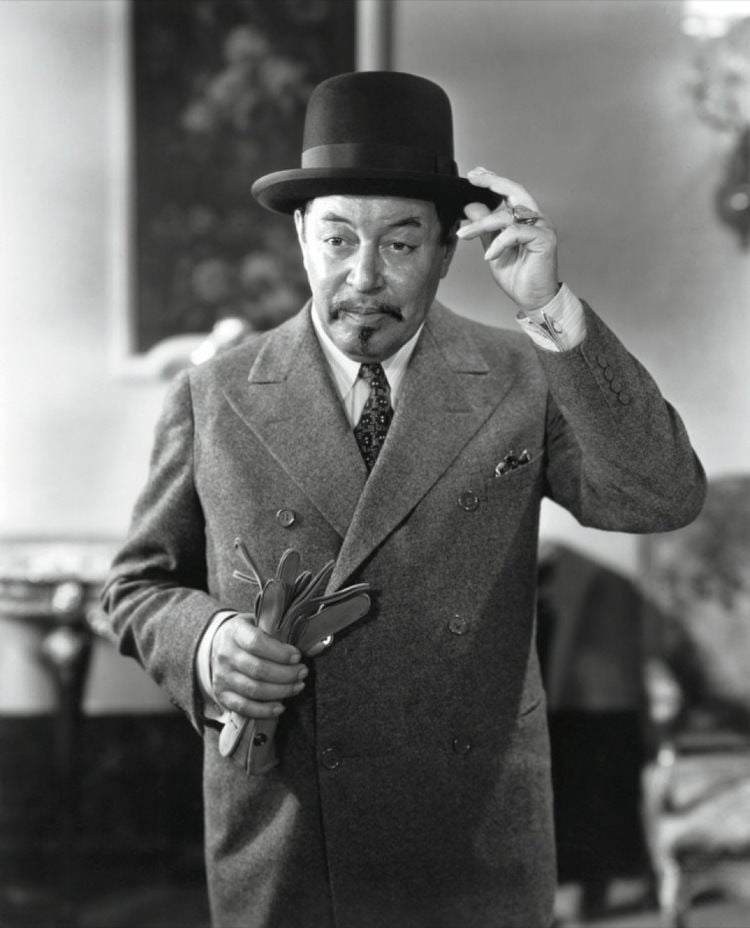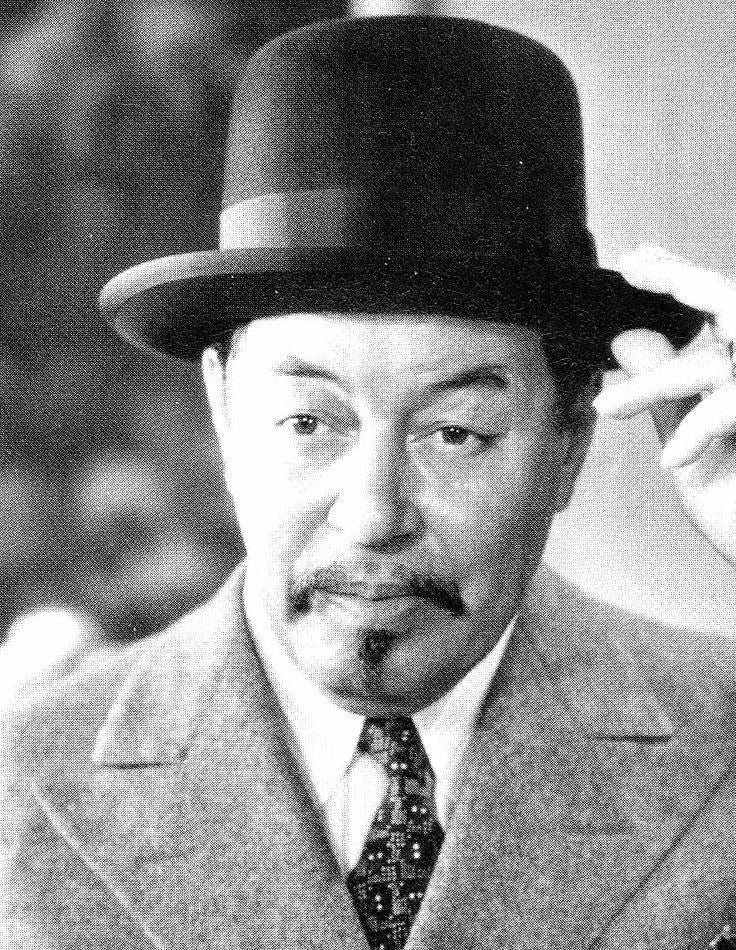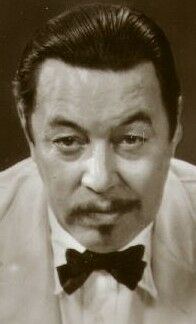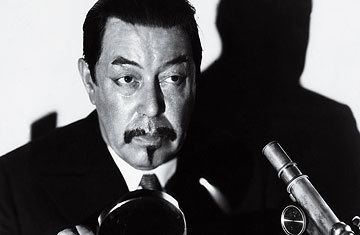First appearance 1926 Children 14 | ||
 | ||
Portrayed by Warner OlandXu XinyuanRoland WintersSidney TolerPeter Ustinov Movies Charlie Chan's Secret, The Black Camel, Charlie Chan in Paris, Charlie Chan in Shanghai, Charlie Chan at the Circus Similar Mr Moto, Fu Manchu, Mr Wong, Portrayal of East Asians in, Sam Spade | ||
Charlie Chan is a fictional character created by Earl Derr Biggers. Biggers loosely based Chan on Honolulu, Hawaii detective Chang Apana, and conceived of the benevolent and heroic Chan as an alternative to Yellow Peril stereotypes and villains like Fu Manchu. Chan is a detective for the Honolulu police, though many stories feature Chan traveling the world as he investigates mysteries and solves crimes.
Contents
- Books
- Films
- Spanish language adaptations
- Chinese language adaptations
- Modern adaptations
- Radio
- Television adaptations
- Comics and games
- Modern interpretations and criticism
- Filmography and DVD availability
- References

Chan first appeared in Biggers' novels, then was featured in a number of media. Over four dozen films featuring Charlie Chan were made, beginning in 1926. The character was first portrayed by East Asian actors, and the films met with little success. In 1931, the Fox Film Corporation cast Swedish actor Warner Oland as Chan in Charlie Chan Carries On; the film became popular, and Fox went on to produce fifteen more Chan films with Oland in the title role. After Oland's death, American actor Sidney Toler was cast as Chan; Toler made twenty-two Chan films, first for Fox and then for Monogram Studios. After Toler's death, six films were made, starring Roland Winters.

Readers and movie-goers of white America greeted Chan warmly, seeing him as an attractive character who is portrayed as intelligent, heroic, benevolent and honorable in contrast to the racist depictions of evil or conniving Asians which dominated Hollywood and national media. However, in later decades critics took contending views, finding that Chan, despite his good qualities, reinforces condescending Asian stereotypes such as an alleged incapacity to speak idiomatic English and a tradition-bound and subservient nature. Many found it objectionable that he was played on screen by Caucasian actors in yellowface.

Film adaptations in the 1990s have been poorly received. The character has been featured in several radio programs, two television shows, and comics.

Books

The character of Charlie Chan was created by Earl Derr Biggers. In 1919, while visiting Hawaii, Biggers planned a detective novel to be called The House Without a Key. He did not begin to write that novel until four years later, however, when he was inspired to add a Chinese-American police officer to the plot after reading in a newspaper of Chang Apana (鄭阿平) and Lee Fook, two detectives on the Honolulu police force. Biggers, who disliked the Yellow Peril stereotypes he found when he came to California, explicitly conceived of the character as an alternative: "Sinister and wicked Chinese are old stuff, but an amiable Chinese on the side of law and order has never been used."

It overwhelms me with sadness to admit it … for he is of my own origin, my own race, as you know. But when I look into his eyes I discover that a gulf like the heaving Pacific lies between us. Why? Because he, though among Caucasians many more years than I, still remains Chinese. As Chinese to-day as in the first moon of his existence. While I – I bear the brand – the label – Americanized.... I traveled with the current.... I was ambitious. I sought success. For what I have won, I paid the price. Am I an American? No. Am I, then, a Chinese? Not in the eyes of Ah Sing.

The "amiable Chinese" made his first appearance in The House Without a Key (1925). The character was not central to the novel and was not mentioned by name on the dust jacket of the first edition. In the novel, Chan is described as walking with "the light dainty step of a woman" and as being "very fat indeed … an undistinguished figure in his Western clothes." According to critic Sandra Hawley, this description of Chan allows Biggers to portray the character as nonthreatening, the opposite of evil Chinese characters, such as Fu Manchu, while simultaneously emphasizing supposedly Chinese characteristics such as impassivity and stoicism.
Biggers wrote six novels in which Charlie Chan appears:

Films
The first Charlie Chan film was The House Without a Key (1926), a ten-chapter serial produced by Pathé Studios, starring George Kuwa, a Japanese actor, as Chan. A year later Universal Pictures followed with The Chinese Parrot, starring Japanese actor, Kamiyama Sojin, in the starring role. In both productions, Charlie Chan's role was minimized. Contemporary reviews were unfavorable; in the words of one reviewer, speaking of The Chinese Parrot, Sojin plays "the Chink sleuth as a Lon Chaney cook-waiter … because Chaney can't stoop that low."
In 1929, the Fox Film Corporation opted Charlie Chan properties and produced Behind That Curtain, starring Korean actor E.L. Park. Again, Chan's role was minimal, with Chan appearing only in the last ten minutes of the film. Not until a white actor was cast in the title role in 1931 did a Chan film meet with success. In Charlie Chan Carries On Chan was played by Swedish actor Warner Oland, who had also played Fu Manchu in an earlier film. Oland, who claimed some Mongolian ancestry, played the character as more gentle and self-effacing than he had been in the books, perhaps in "a deliberate attempt by the studio to downplay an uppity attitude in a Chinese detective." Oland starred in sixteen Chan films for Fox, often with Keye Luke, who played Chan's "Number One Son", Lee Chan. Oland's "warmth and gentle humor" helped make the character and films popular; the Oland Chan films were among Fox's most successful. By attracting "major audiences and box-office grosses on a par with A's" they "kept Fox afloat" during the Great Depression.
Oland died in 1938, and the Chan film, Charlie Chan at the Ringside, was rewritten with additional footage as Mr. Moto's Gamble, an entry in the Mr. Moto series, another contemporary series featuring an East Asian protagonist; Luke appeared as Lee Chan, not only in already shot footage but also in scenes with Moto actor Peter Lorre. Fox hired another white actor, Sidney Toler, to play Charlie Chan, and produced eleven Chan films through 1942. Toler's Chan was less mild-mannered than Oland's, a "switch in attitude that added some of the vigor of the original books to the films." He is frequently accompanied, and irritated, by his Number Two Son, Jimmy Chan, played by Sen Yung.
When Fox decided to produce no further Chan films, Sidney Toler purchased the film rights. Producers Philip N. Krasne and James S. Burkett of Monogram Pictures produced and released further Chan films, starring Toler. The budget for these films was reduced from Fox's average of $200,000 to $75,000. For the first time, Chan was portrayed on occasion as "openly contemptuous of suspects and superiors." African-American comedic actor Mantan Moreland played chauffeur Birmingham Brown in 13 films (1944–1949) which led to criticism of the Monogram films in the forties and since; some call his performances "brilliant comic turns", while others describe Moreland's roles as an offensive and embarrassing stereotype. Toler died in 1947 and was succeeded by Roland Winters for six films. Keye Luke, missing from the series after 1938's Mr. Moto rework, returned as Charlie's son in the last two entries.
Spanish-language adaptations
Three Spanish-language Charlie Chan films were made in the 1930s and 1950s. The first, Eran Trece (There Were Thirteen) (1931), is a Spanish-language version of Charlie Chan Carries On (1931). The two films were made concurrently and followed the same production schedule, with each scene filmed twice the same day, once in English and then in Spanish. The film followed essentially the same script as the Anglophonic version, with minor additions such as brief songs and skits and some changes to characters' names (for example, the character Elmer Benbow was renamed Frank Benbow). A Cuban production, La Serpiente Roja (The Red Snake), followed in 1937. In 1955, Producciones Cub-Mex produced a Mexican version of Charlie Chan called El Monstruo en la Sombra (Monster in the Shadow), starring Orlando Rodriguez as "Chan Li Po" (Charlie Chan in the original script). The film was inspired by La Serpiente Roja as well as the American Warner Oland films.
Chinese-language adaptations
During the 1930s and 1940s, five Chan films were produced in Shanghai and Hong Kong. In these films, Chan owns his detective agency and is aided, not by a son, but by a daughter, Manna, played first by Gu Meijun (顾梅君) in the Shanghai productions and then by Bai Yan (白燕) in postwar Hong Kong.
Chinese audiences also saw the original American Charlie Chan films. They were by far the most popular American films in 1930s China and among Chinese expatriates; "one of the reasons for this acceptance was this was the first time Chinese audiences saw a positive Chinese character in an American film, a departure from the sinister East Asian stereotypes in earlier movies like Thief of Baghdad and Welcome Danger, which incited riots that shut down the Shanghai theater showing it." Oland's visit to China was reported extensively in Chinese newspapers, and the actor was respectfully called "Mr. Chan".
Modern adaptations
In Neil Simon's Murder By Death, Peter Sellers plays a Chinese detective called Sidney Wang, a parody of Chan.
In 1980, Jerry Sherlock began production on a comedy film to be called Charlie Chan and the Dragon Lady. A group calling itself C.A.N. (Coalition of Asians to Nix) was formed, protesting the fact that non-Chinese actors, Peter Ustinov and Angie Dickinson, had been cast in the primary roles. Others protested that the film script contained a number of stereotypes; Sherlock responded that the film was not a documentary. The film was released the following year as Charlie Chan and the Curse of the Dragon Queen and was an "abysmal failure." An updated film version of the character was planned in the 1990s by Miramax. While this Charlie Chan was to be "hip, slim, cerebral, sexy and... a martial-arts master," nonetheless the film did not come to fruition. Actress Lucy Liu is slated to star in and executive-produce a new Charlie Chan film for Fox. The film has been in preproduction since 2000; as of 2009 it is slated to be produced.
Radio
On radio, Charlie Chan was heard in several different series on three networks (the NBC Blue Network, Mutual, and ABC) between 1932 and 1948. Walter Connolly initially portrayed Chan on Esso Oil's Five Star Theater, which serialized adaptations of Biggers novels. Ed Begley, Sr. had the title role in N.B.C.'s The Adventures of Charlie Chan (1944–45), followed by Santos Ortega (1947–48). Leon Janney and Rodney Jacobs were heard as Lee Chan, Number One Son, and Dorian St. George was the announcer. Radio Life magazine described Begley's Chan as "a good radio match for Sidney Toler's beloved film enactment."
Television adaptations
Comics and games
A Charlie Chan comic strip, drawn by Alfred Andriola, was distributed by the McNaught Syndicate beginning 24 October 1938. Andriola was chosen by Biggers to draw the character. Following the Japanese attack on Pearl Harbor, the strip was dropped in May 1942.
Over decades, other Charlie Chan comic books have been published: Joe Simon and Jack Kirby created Prize Comics' Charlie Chan (1948) which ran for five issues. It was followed by a Charlton Comics title (four issues, 1955). DC Comics published The New Adventures of Charlie Chan, a 1958 tie-in with the TV series; the DC series lasted for six issues. Dell Comics did the title for two issues in 1965. In the 1970s, Gold Key Comics published a short-lived series of Chan comics based on the Hanna-Barbera animated series.
In addition, a board game, The Great Charlie Chan Detective Mystery Game (1937), and a Charlie Chan Card Game (1939), have been released.
Modern interpretations and criticism
The character of Charlie Chan has been the subject of controversy. Some find the character to be a positive role model, while others argue that Chan is an offensive stereotype. Critic John Soister argues that Charlie Chan is both; when Biggers created the character, he offered a unique alternative to stereotypical evil Chinamen, a man who was at the same time "sufficiently accommodating in personality... unthreatening in demeanor... and removed from his Asian homeland... to quell any underlying xenophobia."
Critic Michael Brodhead argues that "Biggers's sympathetic treatment of the Charlie Chan novels convinces the reader that the author consciously and forthrightly spoke out for the Chinese – a people to be not only accepted but admired. Biggers's sympathetic treatment of the Chinese reflected and contributed to the greater acceptance of Chinese-Americans in the first third of [the twentieth] century." S. T. Karnick writes in the National Review that Chan is "a brilliant detective with understandably limited facility in the English language [whose] powers of observation, logic, and personal rectitude and humility made him an exemplary, entirely honorable character." Ellery Queen called Biggers's characterization of Charlie Chan "a service to humanity and to inter-racial relations." Dave Kehr of The New York Times said Chan "might have been a stereotype, but he was a stereotype on the side of the angels." Luke agreed; when asked if he thought that the character was demeaning to the race, he responded, "Demeaning to the race? My God! You've got a Chinese hero!" and "[W]e were making the best damn murder mysteries in Hollywood."
Other critics, such as Yen Le Espiritu and Huang Guiyou, argue that Chan, while portrayed positively in some ways, is not on a par with white characters, but a "benevolent Other" who is "one-dimensional." The films' use of white actors to portray East Asian characters indicates the character's "absolute Oriental Otherness;" the films were only successful as "the domain of white actors who impersonated heavily-accented masters of murder mysteries as well as purveyors of cryptic proverbs. Chan's character "embodies the stereotypes of Chinese Americans, particularly of males: smart, subservient, effeminate." Chan is representative of a model minority, the good stereotype that counters a bad stereotype: "Each stereotypical image is filled with contradictions: the bloodthirsty Indian is tempered with the image of the noble savage; the bandido exists along with the loyal sidekick; and Fu Manchu is offset by Charlie Chan." However, Fu Manchu's evil qualities are presented as inherently Chinese, while Charlie Chan's good qualities are exceptional; "Fu represents his race; his counterpart stands away from the other Asian Hawaiians."
Some argue that the character's popularity is dependent on its contrast with stereotypes of the Yellow Peril or Japanese people in particular. American opinion of China and Chinese-Americans grew more positive in the 1920s and 30s in contrast to the Japanese, who were increasingly viewed with suspicion. Sheng-mei Ma argues that the character is a psychological over-compensation to "rampant paranoia over the racial other."
In June 2003, the Fox Movie Channel cancelled a planned Charlie Chan Festival, soon after beginning restoration for cablecasting, after a special-interest group protested. Fox reversed its decision two months later, and on 13 September 2003, the first film in the festival was aired on Fox. The films, when broadcast on the Fox Movie Channel, were followed by round-table discussions by prominent East Asians in the American entertainment industry, led by George Takei, most of whom were against the films. Collections such as Frank Chin's Aiiieeee! An Anthology of Asian-American Writers and Jessica Hagedorn's Charlie Chan is Dead are put forth as alternatives to the Charlie Chan stereotype and "[articulate] cultural anger and exclusion as their animating force." Fox released the restored versions on D.V.D. in 2006; as of mid-2008, Fox has released all of the extant Warner Oland titles and has begun issuing the Sidney Toler series. The first six Monogram productions, all starring Sidney Toler, were released by MGM in 2004.
Some modern critics, particularly East Asian-Americans, dismiss the Charlie Chan character as "bovine" and "asexual", allowing "white America … [to be] securely indifferent about us as men." Charlie Chan's good qualities are the product of what Frank Chin and Jeffery Chan call "racist love", arguing that Chan is a model minority and "kissass". Fletcher Chan, however, argues that the Chan of Biggers's novels is not subservient to white characters, citing The Chinese Parrot as an example; in this novel, Chan's eyes blaze with anger at racist remarks and in the end, after exposing the murderer, Chan remarks "Perhaps listening to a 'Chinaman' is no disgrace." In the films, both Charlie Chan in London (1934) and Charlie Chan in Paris (1935) "contain scenes in which Chan coolly and wittily dispatches other characters' racist remarks." Yunte Huang manifests an ambivalent attitude, stating that in the USA, Chan "epitomizes the racist heritage and the creative genius of this nation’s culture." Huang also suggests that critics of Charlie Chan may have themselves, at times, "caricatured" Chan himself.
Chan's character has also come under fire for "nuggets of fortune cookie Confucius" and the "counterfeit proverbs" which became so widespread in popular culture. The Biggers novels did not introduce the "Confucius say" proverbs, which were added in the films, but one novel features Chan remarking: "As all those who know me have learned to their distress, Chinese have proverbs to fit every possible situation." Huang Yunte gives as examples "Tongue often hang man quicker than rope," "Mind,like parachute, only function when open," and "Man who flirt with dynamite sometime fly with angels." He argues, however, that these "colorful aphorisms" display "amazing linguistic acrobatic skills." Like the African American "signifying monkey," Huang continues, Chan "imparts as much insult as wisdom."
Filmography and DVD availability
Unless otherwise noted, information is taken from Charles P. Mitchell's A Guide to Charlie Chan Films (1999). DVD releases have mostly been in box set format.
The American Western Charlie
Chinese Charlie Chan
